
Home


Hungary


Cardinal József Mindszenty


1956 Hungarian Revolution (My Story)
(My Eyewitness story of our Freedomfight
and Resistance against the Soviet Invasion)


50th Anniversary of our Freedomfight


My Travel Pages

Africa

America

Asia

Europe

Hungary

Oceania
My Mongolia pages

Mongolia

Mongol Art
Mongolia Facts & History in brief

Mongolia Life Experience

Terelj National Park - Turtle Rock

Trans Siberian Railway

Ulan Bator A

Ulan Bator B

Ulan Bator Airport

Ulan Bator - Buses

Ulan Bator - Catholic Cathedral

Ulan Bator Choijin Lama Monastery

Ulan Bator - Railway Station

Ulan Bator - Reservation
|

M. facts & history in brief
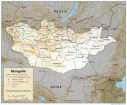 My Mongolia pages
My Mongolia pages
Map of Mongolia
Mongolia
Excerpted from Wikipedia, the free encyclopedia
Mongolia is a country in East-Central Asia.
The landlocked country borders Russia to the
north and China to the south.
The capital and largest city is Ulan Bator.
Mongolia's political system is
a parliamentary republic.
At 1,564,116 square kilometres, Mongolia is the
nineteenth largest, and the least densely populated
independent country in the world with a population
of around 2.9 million people.
It is also the world's second-largest landlocked
country after Kazakhstan.
The country contains very little arable land, as
much of its area is covered by arid and unproductive
steppes, with mountains to the north and west and
the Gobi Desert to the south.
Approximately thirty percent of the country's
2.9 million people are nomadic or semi-nomadic.
The predominant religion in Mongolia is Tibetan
Buddhism, and the majority of the state's
citizens are of the Mongol ethnicity, though
Kazakhs, Tuvans, and other minorities also
live in the country, especially in the west.
About 38% of the population lives in Ulan Bator.
Capital (and largest city) Ulan Bator
Official languages Mongolian
Government Parliamentary republic
Formation
- National Foundation Day 1206
- Bogd Khanate of Mongolia December 29, 1911
- Mongolian People's Republic November 24, 1924
- Democratic Mongolia February 12, 1992
Area 1,564,116 km² 603,909 sq mi
Population
- July 2007 estimate 2,951,786
- 2000 census 2,407,500
- Density 1.7/km²
Currency Tögrög (MNT)
Time zone (UTC+7 to +8
Internet TLD .mn
Calling code +976
History
One of the greatest advances in human culture is
the nomadic pastoralism, the adaptation by nomadic
people to survival on the world's grassland by
raising livestock rather than crops which are
unsuitable to the terrain.
Nomads currently surviving on the Tibetan Plateau
and in the Himalayas are the remainders of nomadic
practices once widespread in Asia and Africa.
The area of Mongolia was part of various steppe empires
like those of the Hsiung-nu, Göktürks, Uighurs, and others.
Mongolia became the center of the Mongol
Empire in the thirteenth century.
After the empire collapsed, Mongolia returned to the
old patterns of internal strife, until the Khalkha
nobles submitted to the Manchu in 1691.
The country was then part of the Qing empire until 1911,
when an independent Mongolian government
was formed under the Bogd Khan.
The Mongolian People's Republic was proclaimed in 1924,
leading to the adoption of communist policies and a
very close alignment to the Soviet Union.
After the fall of communism in Mongolia in 1990, Mongolia
adopted a new constitution which was ratified in 1992.
This officially marked the transition of Mongolia
to a multi-party political system.
Early history
Many ethnicities have inhabited Mongolia since
prehistoric times.
Most of these people were nomads who, from time to time,
formed great confederations that rose to prominence.
The first of these, the Xiongnu, were brought together to
form a confederation by Modu Shanyu in 209 BC.
They defeated the Donghu, who had previously been the
dominant power in eastern Mongolia.
The Xiongnu became the greatest threat to China for
the following three centuries; the Great Wall of China
was built partly as defence against the Xiongnu.
Marshal Meng Tian of the Qin Empire dispersed more than
300,000 soldiers along the Great Wall to prevent
an expected invasion from the North.
It is believed that after their decisive defeat by
the Chinese in AD 428-431, some of the Xiongnu migrated
West to become the Huns.
After the Xiongnu migrated west, Rouran, a close relative
of the Mongols, came to power before being defeated by the
Göktürks, who then dominated
Mongolia for centuries.
During the seventh and eighth centuries, Mongolia was
controlled by the Göktürks, who were succeeded
by the ancestors of today's Uyghur and then
by the Khitan and Jurchen.
By the tenth century, the country was divided into
numerous tribes linked through transient alliances.
Mongol Empire
In the late twelfth century, a chieftain named Temüjin
united the Mongol tribes to the Naiman and Jurchen after
a long struggle and took the name Genghis Khan.
Beginning in 1206, Genghis Khan and his successors
consolidated and expanded the Mongol Empire into the
largest contiguous land empire in world history, going
as far northwest as Kievan Rus.
After Genghis Khan's death, the empire was divided
into four kingdoms, or "Khanates".
One of these, the "Great Khanate," comprised the Mongol
homeland and China, and its emperors were
known as the Yuan Dynasty.
Its founder, Kublai Khan, set up his centre in
present day Beijing.
After more than a century of power, the Yuan Dynasty
was replaced by the Ming Dynasty in 1368,
and the Mongol court fled north.
The Ming armies pursued and defeated them in Mongolia,
but were not able to conquer Mongolia.
However, they were successful in sacking and destroying
the Mongol capital Karakorum and other cities in 1380.
The Chinese wiped out the cultural progress of the
Mongols achieved during the imperial period and
Mongolia was thrown back to the primitive state until
the renaissance of the 16th-17th centuries.
The Ming Emperor Yongle (1402-1424) mounted five
military expeditions into Mongolia.
The beginning of the 15th century is characterised
by struggle for the throne between the Genghisid
taiji and non-Genghisid nobles called taishi.
The taishi were represented by the Oirad nobles
whose success led to an ascendance
of Esen Tayisi to power.
To end the Chinese economic blockade and open up a trade
with Ming Dynasty, Esen Tayisi raided China in 1449
and captured the Ming emperor at the Battle of Tumu.
Shortly after death of Esen, the Genghisids
dominated the power again.
In 1466 Queen Mandihai the Wise installed a young boy
Batumonhe, a descendant of Genghis Khan, on the throne
and then she defeated the Oirad.
Batumonhe Dayan Khan later eradicated the separatism of
the taishi of Southern Mongolia.
During the 16th century, Mongolia was split between
the descendants of Queen Manduhai into Khalkha,
Chaharia, Tumet and other domains.
The ruler of Tumet proclaimed himself as Altan Khan
beside the legitimate Mongolian khan. Raiding China,
he besieged Beijing in 1550 and
reached peace with the Ming Dynasty.
Altan Khan established the city of Hohhot in 1557.
Upon meeting the Supreme Lama of Tibet in his domain in
1577, Altan Khan first referred to him as the Dalai Lama
('Dalai' or 'Ocean' being a translation of the Tibetan
'Gyatso' in his name, Sonam Gyatso) and he became
a convert to Tibetan Buddhism.
At the same time ruler of Khalkha Abtai rushed to
Tumet to meet the Dalai Lama.
Thus, eventually most of the Mongolian
rulers became Buddhists.
Abtai Khan established Erdene Zuu monastery in 1586
at the site of the former city Karakorum.
The second half of the 15th and the 16th centuries saw
the revival and flourishing of the Mongolian culture.
Zanabazar (1635-1723), head of Buddhism in Khalkha,
was a great master of the Buddhist art.
He created the famous sculptures of Sita-Tara and
Siyama-Tara, inspired by lively images
of Mongolian women.
Manchu domination
During the seventeenth century, the Manchu rose to
prominence in the east.
They conquered Inner Mongolia in 1636.
The Khalkha submitted in 1691, bringing all but the
west of today's Mongolia under
the rule of the Qing Dynasty.
For the next two centuries, the Manchu maintained
control of Mongolia with a series of alliances
and intermarriages, as well as
military and economic measures.
Independence
With the fall of the Qing Dynasty, Mongolia
declared independence in 1911.
The new country's territory was approximately
that of the former Outer Mongolia.
The 49 hoshuns of Inner Mongolia as well as the
Mongolians of the Alashan and Qinghai regions
expressed their willingness to join
the young Mongol Khanate.
After the October Revolution in Russia, Chinese
troops led by Xu Shuzheng occupied
the capital in 1919.
The Chinese dominance did not last: notorious Russian
adventurer "Bloody" Baron Ungern who had fought with
the "Whites" (Ataman Semyonov) against the Red army
in Siberia, led his troops into Mongolia and forced a
showdown with the Chinese in Niislel Khüree.
Ungern's forces triumphed, and he briefly in effect
ruled Mongolia under the blessing of
religious leader Bogd Khan.
But Ungern's triumph was shortlived; he was chased out
by the Red Army, and ensured its political alignment
with the Russian Bolsheviks.
In 1924, after the death of the religious leader and
king Bogd Khan, a Mongolian People's Republic was
proclaimed with support from the Soviets.
Alignment with the Soviet Union
The Mongolian People's Republic was aligned
closely with the Soviet Union.
During the 1920s and 1930s, several high-ranking
politicians who demanded a more independent course,
like Dogsomyn Bodoo or Khorloogiin Dandzan,
fell victim to violent power
struggles and were killed.
In 1928, Khorloogiin Choibalsan rose to power.
Under his administration, forced collectivisation
of livestock was instituted, and the destruction
of Buddhist monasteries and Stalinist purges beginning
1937 left more than 30,000 people dead.
During the Soviet-Japanese Border War of 1939,
the USSR defended Mongolia against Japan.
Mongolian forces also took part in the Soviet
offensive against Japanese forces in Inner
Mongolia in August 1945 (Operation August Storm).
The threat of Mongolian forces seizing parts of
Inner Mongolia induced the Republic of China
to recognize Outer Mongolia's independence,
provided that a referendum was held.
The referendum took place on October 20, 1945,
with (according to official numbers) 100% of the
electorate voting for independence.
After the establishment of the People's Republic
of China, both countries re-recognized each other
on October 6, 1949.
The communist rule also undertook the Mongolia's
enemies of the people persecution resulting
in the murder of monks and other people.
After Choibalsan died in Moscow on January 26,
1952, Yumjaagiin Tsedenbal took power.
In 1956 and again in 1962, Choibalsan's
personality cult was condemned.
Mongolia continued to align itself closely
with the Soviet Union, especially after the
Sino-Soviet split of the late 1950s.
While Tsedenbal was visiting Moscow in August
1984, his severe illness prompted the parliament
to announce his retirement and
replace him with Jambyn Batmönkh.
1990 Democratic Revolution
The introduction of perestroika and glasnost in the
USSR by Mikhail Gorbachev strongly influenced
Mongolian politics even though Mongolia
was a sovereign nation.
The decline of communism in the Soviet Union
and its collapse in Eastern Europe, combined
with these two policies, were enough to lead
to the peaceful Democratic Revolution of 1990.
This, in turn, allowed Mongolia to begin
engaging in economic and diplomatic relations
with the Western world.
The nation finished its transition from a
communist state to a multi-party capitalist
democracy with the ratification of
a new constitution in 1992.

For a more information about
Mongolia see Wikipedia, the free encyclopedia

This page was retrieved and condensed from
(http://en.wikipedia.org/wiki/Mongolia)
see Wikipedia, the free encyclopedia, February 2008.
All text is available under the terms of the
GNU Free Documentation License
(see
Copyrights for details).
About Wikipedia
Disclaimers

This information was correct in February 2008. E. & O.E.

2007
You can click on these photos for an enlargement
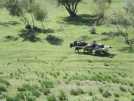 |
 |
 |
| Mongolia |
Mongolia |
Mongolia |
 |
 |
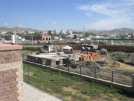 |
| Mongolia |
Mongolia |
Mongolia |
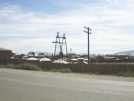 |
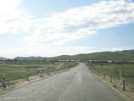 |
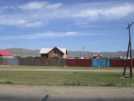 |
| Mongolia |
Mongolia |
Mongolia |
 |
 |
 |
| Mongolia |
Mongolia |
Mongolia |
 |
 |
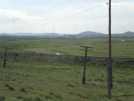 |
| Mongolia |
Mongolia |
Mongolia |
 |
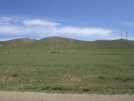 |
 |
| Mongolia |
Mongolia |
Mongolia |
 |
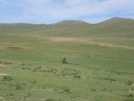 |
 |
| Mongolia |
Mongolia |
Mongolia |
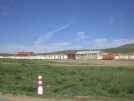 |
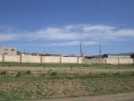 |
 |
| Mongolia |
Mongolia |
Mongolia |
 |
 |
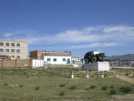 |
| Mongolia |
Mongolia |
Mongolia |
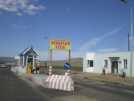 |
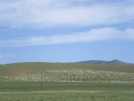 |
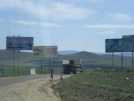 |
| Mongolia |
Mongolia |
Mongolia |
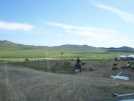 |
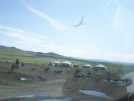 |
 |
| Mongolia |
Mongolia |
Mongolia |
 |
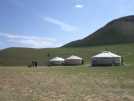 |
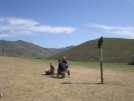 |
| Mongolia |
Mongolia |
Mongolia |
 |
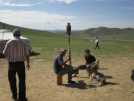 |
 |
| Mongolia |
Mongolia |
Mongolia |
 |
 |
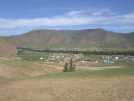 |
| Mongolia |
Mongolia |
Mongolia |
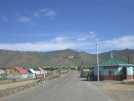 |
 |
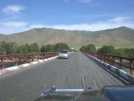 |
| Mongolia |
Mongolia |
Mongolia |
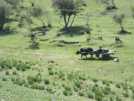 |
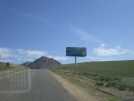 |
 |
| Mongolia |
Mongolia |
Mongolia |
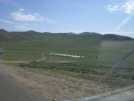 |
 |
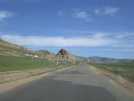 |
| Mongolia |
Mongolia |
Mongolia |
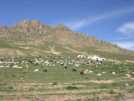 |
 |
 |
| Mongolia |
Mongolia |
Mongolia |
 |
 |
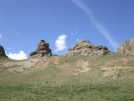 |
| Mongolia |
Mongolia |
Mongolia |
 |
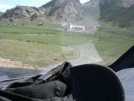 |
 |
| Mongolia |
Mongolia |
Mongolia |
 |
 |
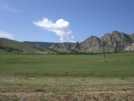 |
| Mongolia |
Mongolia |
Mongolia |
 |
 |
 |
| Mongolia |
Mongolia |
Mongolia |
 |
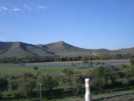 |
 |
| Mongolia |
Mongolia |
Mongolia |
 |
 |
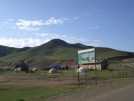 |
| Mongolia |
Mongolia |
Mongolia |
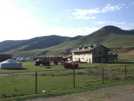 |
 |
 |
| Mongolia |
Mongolia |
Mongolia |
 |
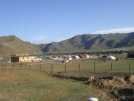 |
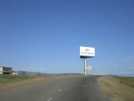 |
| Mongolia |
Mongolia |
Mongolia |
 |
 |
 |
| Mongolia |
Mongolia |
Mongolia |
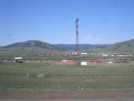 |
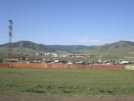 |
 |
| Mongolia |
Mongolia |
Mongolia |
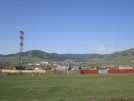 |
 |
 |
| Mongolia |
Mongolia |
Mongolia |
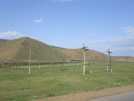 |
 |
 |
| Mongolia |
Mongolia |
Mongolia |
 |
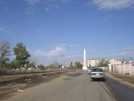 |
 |
| Mongolia |
Mongolia |
Mongolia |
 |
| Mongolia |
|